Building a marketplace idea begins with selecting your multi vendor marketplace platform. This is first big decision you will have to make to ensure your project goes smooth. To begin your software selection process, you need to know what it will take to make your marketplace function as you envision it.

First, you should write out a list of the features you need and how customers and vendors should navigate and use your site. This list should be as detailed as possible, so that you can compare it to the multi vendor marketplace platforms you are reviewing. You should then figure out what kind of budget you are working with, and how quickly you want to launch your marketplace. Once you are satisfied with your requirements, begin going through the different multi vendor platform options available.

Beginning Steps
-
Write a detailed list of your marketplace requirements
-
Figure out your budget and time frame
-
Review marketplace software by comparing it to your list
Benefits of Marketplace eCommerce

Benefits for the Marketplace Owner
Companies such as eBay and Amazon have proven that there is immense profit to be made from simply hosting vendor sales. These companies do not need to hold stock themselves or handle orders. They can instead focus on drawing in customers and increasing marketplace brand recognition. Vendors use the well-trafficked platforms to sell products themselves. The marketplace owner collects commissions on every sale and can charge fees for listing.
With a multi vendor marketplace you instantly increase your product offering. This gives customers better selection, further increasing traffic and sales.
-
Increased product offering increasing traffic
-
Reduce or eliminate mundane sales tasks
-
Focus on marketing
-
Revenue from commissions and marketplace fees
Benefits for Vendors
Sellers no longer have to deal with the planning, development, and costs of opening their own ecommerce store. They take advantage of existing site traffic, reducing marketing efforts and expenditures. They can utilize the marketplaces built in payment, shipping, or fulfillment features, reducing overhead. For the cost of commissions or sellers’ fees, vendors receive traffic and advanced ecommerce tools that would otherwise be impossible to gain on their own.
-
Easy to start selling with minimal planning and development
-
Traffic from marketplace and its marketing expenditures
-
Low costs compared to building own ecommerce site
-
Advanced sellers tools
Benefits for Consumers
The network of connected sellers helps customers find a more diverse set of products. Product pricing is transparent and somewhat uniform, giving them clarity on correct purchase prices. Many options for purchasing the same product makes it easy to find the best deal, shipping time, or customer service.
-
Large selection of products or services
-
Transparent pricing and shipping costs
-
Find the best deal, shipping time, or customer service
Differences in Platforms and Projects

Cloud or Hosted
Cloud/Hosted Platforms
These are usually out-of-the-box software platforms for quickly launching your marketplace with minimal costs. Generally paid for with monthly or yearly subscriptions, they offer the quickest way to get up and running with little technical expertise. You don’t need to know anything about hosting or coding. However, because they are designed to be used by anyone, they are often limited in their customizability.
The source code is often not accessible and only built in features and addons can be used. If your store is a normal marketplace with common features, a cloud shop could be a great solution.
PROS:
-
Low cost
-
Quick setup
-
Little tech knowledge needed
CONS:
-
Limited customizability
-
Limited features
-
May not be scalable
Self-Hosted Platforms
These are software platforms that you host on a server. They do require more time to set up and some technical knowledge, which generally means they are more expensive custom projects. These platforms may or may not give you access to the source code for development customizations. When selecting your multi vendor marketplace platform, make sure it has the features you require, or that has source code that can be customized to fit your needs.
These are often a great starting point to build high-performing, scalable marketplaces because the main features are already built-in. They simply need to be tweaked to fit your business model.
PROS:
-
Highly customizable
-
Many features
-
Highly scalable
CONS:
-
Expensive
-
Technical knowledge needed
-
Long development time before launch
Open Source, Proprietary, or Licensed
Open Source
Open software is great, giving you free access to the source code and great customizability. Marketplaces built with open source software often require much technical knowledge and development time. For this reason, although free, they can be quite expensive. You often must buy addons or develop them yourself to get all the features you need. Changes you make to the source code also usually have to be shared back with the software owners and community. This means your marketplace ideas and custom features will be accessible by all to recreate.
PROS:
-
Access to source code
-
Highly customizable
-
Often free
CONS:
-
Limited support
-
Requires technological knowhow
-
Customizations are not proprietary and must be shared
-
Costs can rise with additional addons or feature sets
Proprietary
Most cloud-based platforms are closed source and proprietary to the software owners. You pay to use the software and the built-in features and are not permitted to alter the source code or to customize it. These are great for building marketplaces as long as the features you need are readily available. They are updated frequently and stable, but may not be suitable for complex and huge, scaling marketplaces.
PROS:
-
Quick to develop and launch
-
Little technology knowledge needed
-
Frequently updated and stable
CONS:
-
Low customizability
-
Limited to built-in features
-
Your marketplace is not your proprietary property
-
May not be scalable
Licensed
Licensed software gives you access to the source code, allowing for high customizations. These are often more expensive and require development time and expenditures. Because you pay to license the technology, your customizations and developed features are your proprietary property. You keep your work and can continue to use the software for the life of the license. This is a great choice for giant marketplaces that are unique and innovative, where you do not want your idea replicated. They are highly scalable and robust and often come with developer support directly from the software company.
PROS:
-
Access to source code
-
Highly customizable
-
Own the proprietary features and customizations you create
-
Highly scalable
-
Developer support
CONS:
-
Expensive
-
Long development time before launch
-
Need technological knowledge
Out-of-the-box or Customized Project
Out-of-the-box
Pre-packaged software is ready to go with all the features you need to get a basic marketplace up and running. These are often cloud based subscription software that require little technological expertise or budget. A great way to go if your marketplace is fairly un-complex, has normal marketplace features, or you just want to test your idea. Marketplace features similar to eBay and Etsy are common amongst most out-of-the-box multi vendor platforms.
PROS:
-
Low cost
-
Quick setup
-
Little tech knowledge needed
CONS:
-
Limited customizability
-
Limited features
-
May not be scalable
Custom Project
For building more complex marketplaces, for new, innovative features, or for connecting to important legacy systems. These generally require a substantial budget for development expenditures and take some time to launch. Projects can be built completely from scratch, coding from the ground up, or can be started with existing marketplace software platform as the base architecture.
PROS:
-
Highly customizable
-
Many features
-
Highly scalable
CONS:
-
Expensive
-
Technical knowledge needed
-
Long development time before launch
Ready to get started?
See our powerful multivendor platform at work, launch a marketplace today!
First Things to Consider

Do you Need Standard or Custom Features?
When choosing your multi vendor marketplace platform, you should have a list of the features needed for your marketplace to be complete. Some standalone and ecommerce platforms may come with many of the features needed to successfully run your marketplace. These built in features are usually the most commonly used features by all marketplaces.
But your marketplace idea may be more complex or need custom logic or connections to legacy software systems. In these cases, you should choose a platform that allows for the most customizability or extensibility. This also means your developers need access to the source code of the platform. Many out-of-the-box and cloud/hosted platforms will not allow you to access the source code to make changes from within. You can only use the features and addons provided with the platform subscription.
This will work great for marketplaces based on the most common features used by other marketplaces, but for unique and innovative logic, or for connections to legacy systems like ERP’s, your developers will need rights to customize the platform itself. Code access is usually provided through purchased Software Licensing or through free open source licensing.
SOME QUESTIONS TO ASK?
-
How different is your marketplace idea than a normal one like eBay or Etsy?
-
Which parts of store management should be done by you and what can be done by suppliers?
-
Do you use legacy software that has to be connected to your marketplace?
-
Do you want code and customizations that you create to be proprietary and owned by you?
-
Do you want vendors to upload their own products, or do you want to upload products and have vendors select what to sell?
-
Do you want to be able to approve or disapprove vendor products?
-
Do you want to charge a different fee for listing different product types?
Ease of Use
This is one of the most important features to consider when selecting a multi vendor marketplace solution. It has to be easy to use for the marketplace owner, vendors, and customers. Managing a multi vendor store is a balance between vendor and owner tasks.
For Marketplace Owners
As a marketplace grows, so does the number of vendors, products, orders, and traffic. Owners must be able to easily manage the site no matter how quickly it scales. Automations and work flows reduce time spent on mundane daily tasks. Owners can allocate their time to marketing and increasing traffic, rather than handling orders or paying commissions.
For Vendors
Ease of use for vendors begins at signup. The registration process, onboarding, and training of the system must be simple enough for vendors to start selling in minutes. New signups are often inexperienced or not tech savvy. There should be a guide or tool in place to explain the main operational processes.
The vendor’s dashboard must also be easy and intuitive to use. Confusing or poorly built vendor User Interfaces will turn them away to other platforms. Sellers must be able to easily manage product inventory, orders, fulfillment, and their own shop branding.
For Customers
Customers need to find the best deals, vendors, and the exact product they are looking for. A well-designed user interface will give customers the best customer experience, letting them find and buy products in a few clicks. Payments, shipping, and return policies should be clear and easy to complete.
Do you Sell Digital Products?
Does your store offer digital goods or services such as e-books, videos, pictures, training courses, or event tickets? Then your marketplace software should offer the right method of delivering that medium. There should be a seamless way for paying customers to get their digital good or service instantly, whether that be super-fast downloads of documents, or quick signups for watching user videos.
The sales funnel for digital goods is usually longer than for physical products. The software you choose must have good marketing and sales tools to reach and retain customers.
Do You Need a Mobile App?
Most multi vendor marketplace platforms are web-apps, where users can access the store through any web browser. They are usually responsive, meaning the user interface appears different on mobile devices for better usability through small touch screens. This works great for most use cases and can be enough for lots of traffic and sales.
But you may want to offer an app for your marketplace through the Apple or Google Play stores for mobile phones and tablets. You would need this app to be branded and designed for your marketplace. Apps downloaded and installed offer better retention and sales with native notifications and other marketing tools.
Most out-of-the-box platforms do not offer a way to build an app, because the software was designed to be used through a web browser. Building a true iOS or Android app requires extra development work and expenditures. When selecting your multi vendor marketplace software, be sure to check if there is a possibility for app development further down the road.
Cost and Budget
When selecting a multi vendor marketplace software platform, there are more costs to consider than just the platform price. Associated costs can often be much more expensive than the software subscription or licensing price. The biggest costs associated with building a multi vendor marketplace are customization/development of your solution, integrations to legacy software, and marketing your store. The more features already built into the software that match your marketplace requirements, the less customization that will be needed, the less it should cost.
Complex and innovative marketplace may require months of development work before launch. It is important to choose a development team that understands your marketplace requirements and that you can work closely with to get everything exactly right. Development can also continue for months or even years after it is up and running, as customer demands and technology improvements require new features to be constantly added to the store.
If your business model is simple enough, your marketplace requirements may already fulfilled by an out-of-the-box marketplace platform. In this case, you can usually quickly launch your store for just a few hundred dollars for the price of the subscription and any addons you may need. More complex Enterprise Projects often run in the tens of thousands of dollars for development and integrations before launch.
Ready to get started?
See our powerful multivendor platform at work, launch a marketplace today!
Components of Multi-Vendor Marketplace Software – Essential Features

Charging Vendors Commissions and Fees
Multi vendor marketplace owners make money from charging vendors a commission fee for each product sold. This is one of the most important features of a multi vendor solution and should be easy to control and automate. Pricing for vendors needs to be straight forward for them to understand, and they need to be paid quickly and consistently. Your marketplace software should be able to automatically distribute funds to your vendors, so you don’t have to spend time with accounting.
The fee is usually a percentage of a vendor’s sales. The software should automatically calculate this amount and distribute it to each separate vendor. But you may have a very complex commission structure that needs to be handled by the software logic. You may want to charge different prices for different product categories or values. These special features may need to be custom developed for your solution or configured through the Payment Gateway used to handle payments.
Payment Gateways such as Stripe and Paypal can already handle this well with some configuration of their built-in features. Remember to match your commission structure to your multi vendor software features or to allocate development expenditure to customize your payment system.
Simple Vendor Registration and Product Listing
To attract vendors and get more signups, you need to have a super-easy onboarding process. This means vendors can easily find your marketplace, signup, and begin listing products without help from support. Your registration form can often be just a couple fields like email address and password.
Once vendors sign up, they should be able to easily navigate their admin panel or dashboard and have guides and documentation to get them started. Getting started includes customizing their own shop page, uploading and editing products, and managing orders, shipping, and commissions.
Dashboard for Vendors
The whole point of multi vendor marketplace is to shift everyday shopping tasks to vendors. The vendor dashboard or administration portal is where sellers handle their operations. Each vendor should have their own personal dashboard and sign-in and only see products, customers, and orders pertaining to them
In the dashboard they can manage inventory and products, handle sales and orders, conduct marketing campaigns, adjust shipping options and rates, get sales reports, and handle returns. A good User Interface and intuitive work flow will make sure they stay on top of their sales, keeping your marketplace consistent.
Vendor Management
As the marketplace owner, it is your job to keep track of all your vendors to make sure they are consistently updating products and handling orders. Vendors need to be held accountable and follow your marketplace policy so that customers get the same service from every purchase.
Updated product listings keep customers attention and draw in new sales. You need to make sure your marketplace has consistent product quality and visual appeal. The admin should be able to approve vendor product listings based on description, category, or picture.
Multi vendor marketplace software should also provide real-time data on all vendors and provide different reports for analyzing vendor sales. This way you can hold sellers accountable and reward those with good performance.
One way to hold sellers accountable without having to intervene is through customer ratings. By allowing ratings of vendors they are forced to handle orders efficiently and consistently manage their products and store.
Simple Ratings of Products and Vendors
Customer reviews not only help other customers find the right product, but also make your marketplace look active and alive. Encouraging customer ratings starts from providing an easy method for reviewing products and vendors. This can be as simple as a form on the website or a link to a form in a customer order email or receipt.
Not only do ratings improve your store, they also help keep vendors in check. Vendors must maintain their store and efficiently serve customers to avoid poor reviews.
Inventory Management
Running a successful marketplace requires keeping an eye on all your vendors, as well as their product listings and order fulfillment performance. Because in most cases, vendors are responsible for their own inventory and orders, and need to be able to easily handle it all. Adding new products should be easy one at a time or in bulk through an import of a list. Because vendors edit products daily, adding descriptions, pictures, pricing, shipping methods, and discounts must be intuitive and easy.
Not all marketplace software will be able to handle the particular types of products your vendors will be selling. Products can also have many variations such as different size or color, each with their own inventory amount and purchase price. When selecting a platform, make sure it can handle the complexity of your offerings and let vendors easily keep track of it all.
Inventory is also not just about adding and showing products. To increase sales or total cart totals, you can bundle products, offer bulk discounts, or offer cross-selling and related products to entice extra purchases. Coupons or free shipping can be offered once a basket total reaches a certain amount, increasing more add-to-cart pushes. These all should be easily manageable by individual vendors and by the admin. There should also be product reports to show what is selling well, and what should be discontinued. Check through multi vendor features to make sure your platform can handle your inventory and sales needs.
Order Management
Managing orders should be the focus of your operation. Your marketplace software must give vendors everything they need to efficiently get products or services to customers. Vendors need to know when an order comes in and how to fulfill it for best customer satisfaction. The system has to split orders that have products from multiple vendors, sending the correct information to the correct vendor.
Order management requires advanced notifications and automations to be set through rules. So, when an order comes in, the right person is notified, and customer communication and fulfillment operations commence automatically. The more automated and easy order management is, the more products your vendors can efficiently ship out.
Fulfillment and Shipping
Fulfillment and shipping in multi-vendor marketplaces is usually handled by the vendors themselves. The multi vendor software you select should help vendors efficiently and quickly send out shipments. Vendors should be notified of new orders and be able to set order statuses for shipped and unshipped products.
You, the admin, control shipping by providing different shipping methods and having a cohesive shipping policy. This ensures that your marketplace stays consistent and meets customer expectations from every vendor. You should be able to track and analyze vendors and their orders to make sure they are shipping on time. For global operations, you need integrations to international shipping services like FedEx and UPS or to shipping software solutions like ShipStation or Pitney Bowes.
Returns and Money Back Guarantees – Liability
Returns and money back guarantees are a huge part of any ecommerce store or marketplace. Customers need to be able to return goods and receive refunds, replacements, or store credit. Sellers need to be able to handle the returns easily and without hurting their profit margin. Depending on what kind of goods vendors sell on your marketplace, this can be very complex and costly to develop. Your return policy should be well thought out and overhead costs negligible. You also need to make sure your marketplace returns policy is clear to sellers and customers.
The systems should provide reports on returns for you and the vendor. This will help in business development and in finding ways to reduce returns.
Reports and Analytics
Reports and analytics are the key to understanding and improving sales in your multi vendor marketplace. You need to have reports related to the entire store, all sales, orders, campaigns, products, and customers. You also need reports about all vendors and individual vendors, to keep on top of performance and policy compliance. Analytics can be measured through the platform or through 3rd party tools like Google Analytics or SAP Business Intelligence Platform.
By studying trends and patterns you can learn why your store has sales lulls, which products sell best and need to be prioritized, how to reduce abandoned carts, and more. When you implement a management, marketing, or other change, you can measure its effects and learn new best methods of operation.
When selecting a multi vendor marketplace software platform you should check the reports and analytics available. You may need some complex or specialized reports not available in out-of-the-box solutions. These will need to be customized with development expenditures and require a platform with access to the source code.
Branding the Marketplace and Vendor Pages
When it comes to branding your store, you want to make sure it is consistent across your site. At the same time, you want to give vendors some level of freedom to brand their own page or product listing. Some multi vendor solutions allow vendors to have more than one branded page, but generally keep the marketplace branding at the top at all times. In some instances, vendors get their own URL domain or sub-domain and can brand their site as much as they want.
Vendor pages are a way to stand out from the crowd. They can highlight sellers’ reviews, logos, pictures, or descriptions. They can also include individual categorized product listings showing only their products and highlighting discounts or featured products.
Your multi vendor marketplace software selection process should include reviewing branding features and how you can separate vendor pages or sites.
Custom Taxes
Are you selling globally, or even across different Sates in the US? Then you will need taxes to be calculated for every order based on location. Your marketplace software should automatically do this for you instantly on every order. These tax rates also change frequently, and the system must update itself with the new calculation information. You can also connect to 3rd party Tax Software such as Avalara, which handle these updates and tax calculations behind the scenes.
You may also need to set special tax rules based on customer tax groups, business relationship, or other custom logic. Software needs to automatically account for these special circumstances when a particular customer is logged in. Make sure your platform has the tax capabilities you need to operate your marketplace before committing.
Conclusion
There are many things to consider when beginning to build your dream shop. Selecting your multi vendor marketplace platform is the first step and can be a difficult process. Hopefully this guide helps you understand the differences in platforms and the main things to consider when weighing your options. First, set your budget and write down your list of needed marketplace requirements. You can then match those to the software you review, giving you the best platform to begin building.
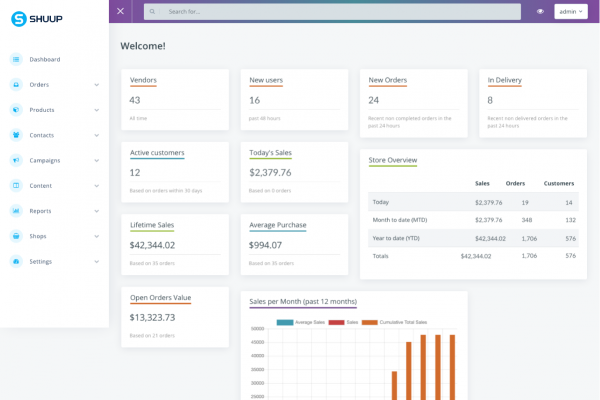
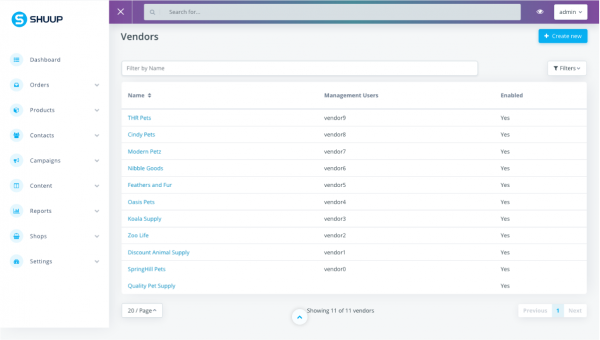
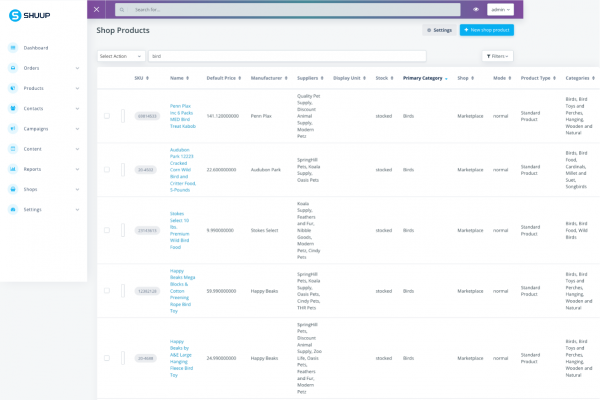
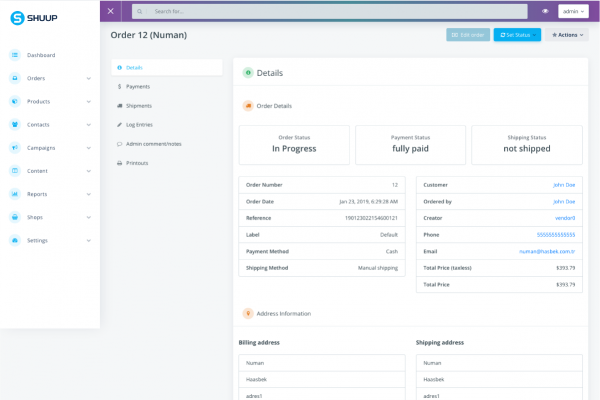
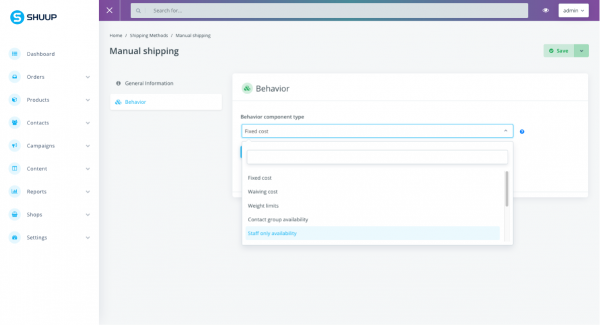
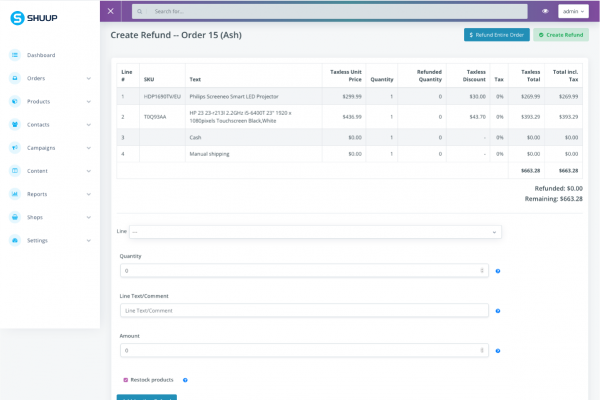
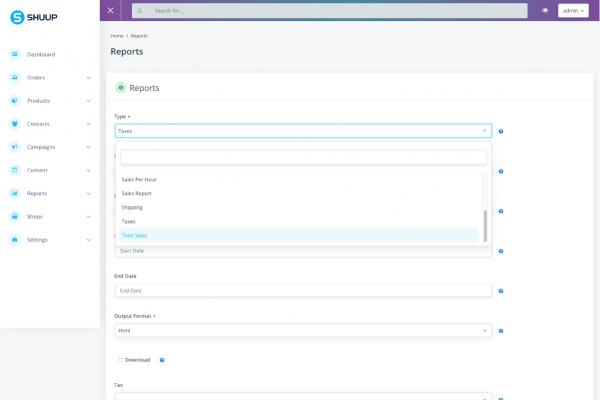
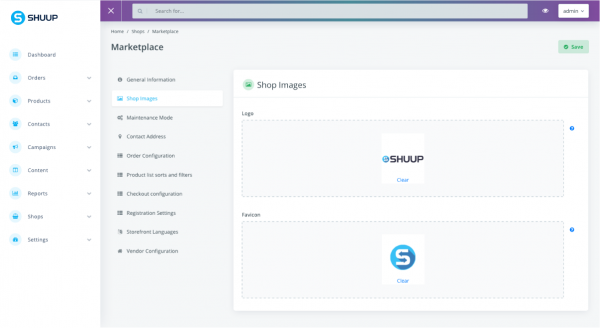
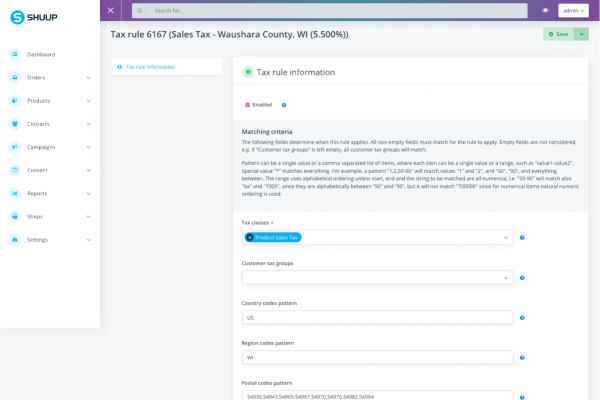






Leave A Comment